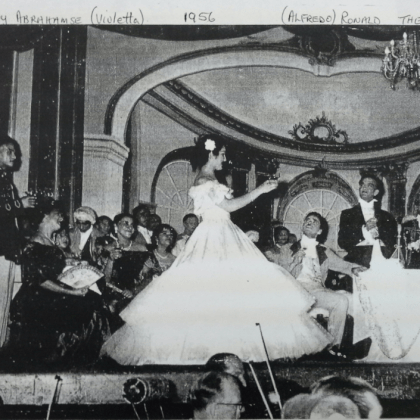Envoy to Apartheid: The Royal Ballet in South Africa, 1960
This blog accompanies Laura Quinton’s Historical Journal article Britain’s Royal Ballet in Apartheid South Africa, 1960
In July 2016, I made an unexpected discovery at The National Archives. Conducting preliminary research for my PhD dissertation on ballet and the British state, I was browsing the archive’s British Council files for anything on dance. Although the state-funded Council sponsored hundreds of international tours by British dance companies after 1945, I found that only a few full files on these efforts had made it to the archive. Opening one such battered file on the Royal Ballet’s 1960 tour of South Africa, I came across a story completely unfamiliar to me.
This solitary file became the jumping-off point for my article on the Royal Ballet’s 1960 tour of apartheid South Africa. In late 1959, before the tour began, the company’s decision to leave behind its only dancer of colour, the South African-born soloist Johaar Mosaval, ignited parliamentary debates and media uproar. The company’s three-month journey nevertheless went ahead without Mosaval, aided by the British Council and John Maud, Britain’s High Commissioner to South Africa. The tour began days after British Prime Minister Harold Macmillan delivered his influential ‘Wind of Change’ address in Cape Town, typically held up as a watershed moment of British acquiescence to decolonization, and continued through the Sharpeville massacre.
Considering the planning, execution, reception, and legacy of this tour, my article explores the entanglements of high culture, the Cold War, and imperial politics at a pivotal historical moment. Reading the tour alongside the ‘Wind of Change’ speech, I show how ballet worked as a tool of British ‘soft power’, aiding the decolonizing state in its effort to shore up ties with white South Africans, whatever the cost.
Read Laura’s full article here
Main image credit: 27th January 1960: Nadia Nerina at Covent Garden, London in the ballet ‘La Fille Mal Gardee’ . Choreography by Frederick Ashton, music adapted by John Lanchbery after Herold, designs by Osbert Lancaster. (Photo by Erich Auerbach/Getty Images)






